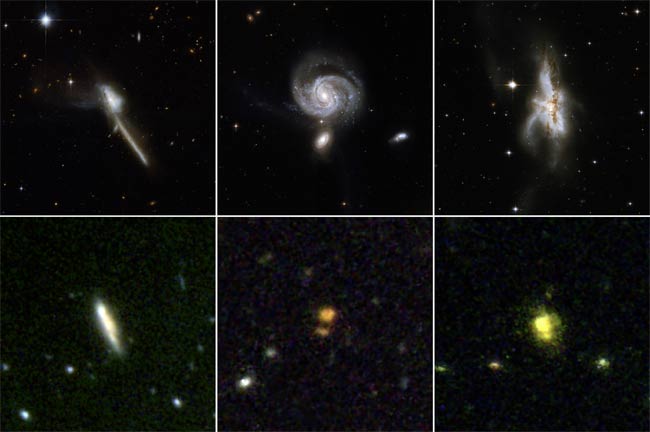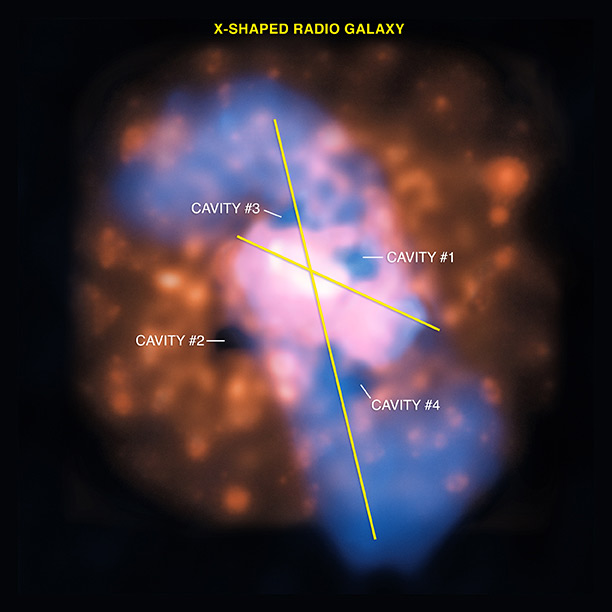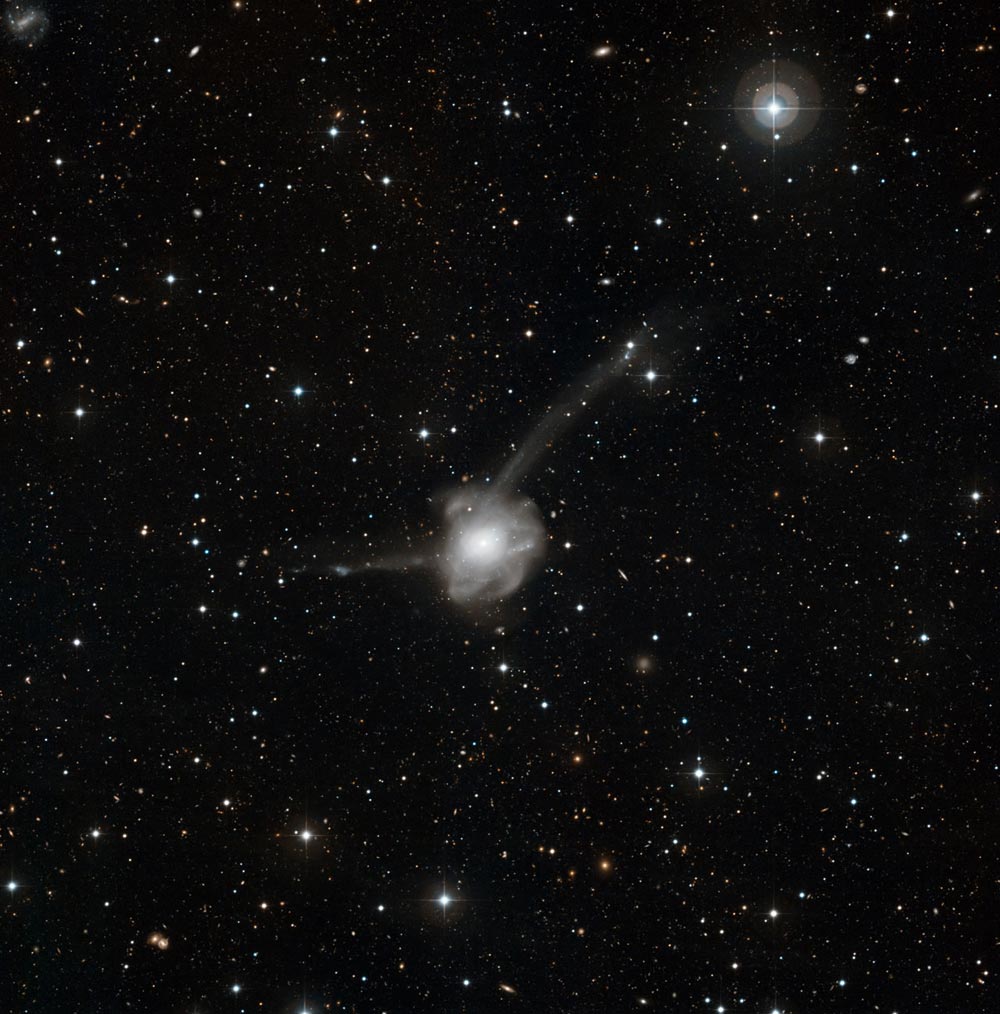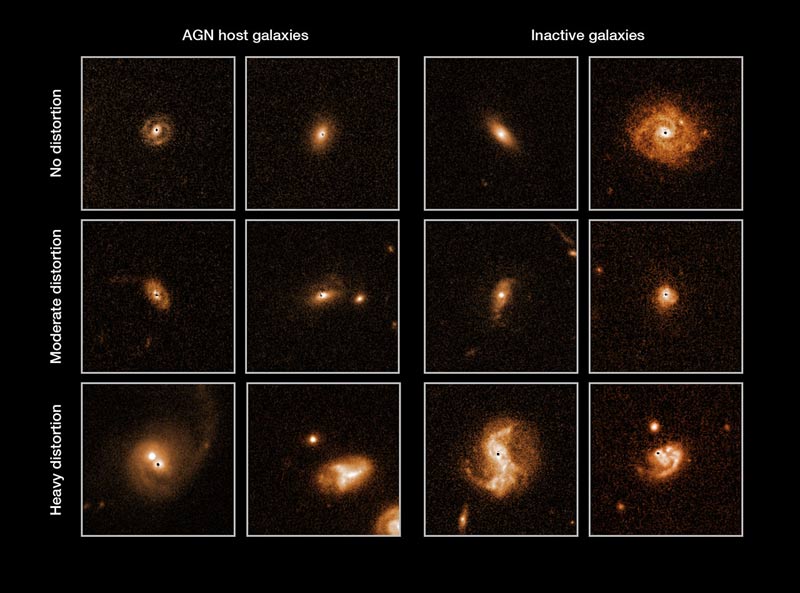When Galaxies Collide: Photos of Great Galactic Crashes
Merging Galaxies Obscure Huge Black Hole
Examples of merging galaxies containing a heavily obscured growing supermassive black hole observed by the Hubble Space Telescope. The top panels show nearby galaxies at ~500 million light-years from us, while the more distant galaxies in the bottom panels are ~6.5 billion light years away, when the universe was half its current age.
Black Hole Knocked Off Axis By Galaxy Collision
This X-ray image of hot gas in and around 4C +00.58 reveals four different cavities -- regions of lower than average X-ray emission -- around a black hole that was disturbed by galaxy interactions. These cavities come in pairs: one in the top-right and bottom-left (labeled cavities #1 and #2 respectively), and another in the top-left and bottom-right (labeled cavities #3 and #4 respectively). Special processing was applied to this image to make the cavities more obvious.
Galaxy Collision May Reveal Insights on Universe's Evolution
This new image shows the results of a vast collision between two galaxies. This strange object is known as NGC 7252, or Arp 226, and has the odd nickname Atoms-for-Peace. The picture was taken at ESO's La Silla Observatory in Chile. It is a combination of exposures taken through blue and red filters, for a total exposure time of more than four hours.
Collisions Don't Always Feed Black Holes
A study using images from the Hubble Space Telescope has found that galaxies with powerful black holes at their cores - called Active Galactic Nuclei or AGN (on the left) need not rely on galaxy collisions to grow. Non-AGN galaxies are shown on the right. The photos come from the COSMOS survey using the Hubble Space Telescope.
Space Tadpoles Signal Black Hole Mergers
An image of 36 young galaxies caught in the act of merging. They are called "tadpole" galaxies because of their distinct knot-and-tail shapes.
NGC 5426
NGC 5426 and NGC 5427 are two spiral galaxies known together as Arp 271. Image created February-March 2012.
Breaking space news, the latest updates on rocket launches, skywatching events and more!

Space.com is the premier source of space exploration, innovation and astronomy news, chronicling (and celebrating) humanity's ongoing expansion across the final frontier. Originally founded in 1999, Space.com is, and always has been, the passion of writers and editors who are space fans and also trained journalists. Our current news team consists of Editor-in-Chief Tariq Malik; Editor Hanneke Weitering, Senior Space Writer Mike Wall; Senior Writer Meghan Bartels; Senior Writer Chelsea Gohd, Senior Writer Tereza Pultarova and Staff Writer Alexander Cox, focusing on e-commerce. Senior Producer Steve Spaleta oversees our space videos, with Diana Whitcroft as our Social Media Editor.






